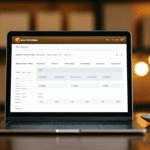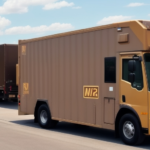Understanding UPS Shipping Rates by Weight and Size
Shipping packages through UPS requires a clear understanding of how rates are calculated based on weight and size. By mastering these factors, you can select the most appropriate shipping service for your needs, optimizing both cost and efficiency. This guide delves into the intricacies of calculating UPS shipping rates by weight and size, alongside other critical factors influencing these costs.
How to Calculate UPS Shipping Rates by Weight
The weight of your package is a pivotal determinant of the shipping rate. UPS employs a weight-based billing system, meaning that heavier packages incur higher shipping costs. To accurately calculate shipping expenses based on weight, utilize the UPS Rate Guide.
The Rate Guide offers a detailed list of rates categorized by various package weights and destinations. To use it effectively, you'll need the package weight in pounds and the destination zip code. Locate the weight bracket corresponding to your package, identify the rate for your destination, and account for any additional surcharges that may apply.
Moreover, UPS provides discounts for frequent shippers. Increased shipping volume can lead to significant savings. Additionally, UPS offers diverse shipping options, including Ground, Air, and International services, each with distinct rates and delivery timelines. Evaluating your shipping requirements and budget is essential when selecting the appropriate service.
Measuring Your Package Dimensions for UPS Shipping
Package dimensions significantly influence UPS shipping rates. Larger packages generally incur higher shipping costs. To measure your package dimensions accurately, record the length, width, and height using a tape measure or ruler.
With these measurements, refer to the UPS Rate Guide to determine the cost based on package size. Packages exceeding size and weight limitations may face additional charges.
UPS has specific guidelines for measuring package dimensions. Irregularly shaped packages require measurement of the widest points to ensure accuracy. If your package has bulges or protrusions, measure these separately and include them in the overall dimensions.
Packaging material also plays a role in measurement. For boxed items, measure the exterior dimensions of the box. For items in padded envelopes or flexible packaging, measure the dimensions of the enclosed item.
Factors Affecting UPS Shipping Rates
Several factors influence UPS shipping rates, including destination, package weight and size, chosen shipping service (Ground, Air, etc.), and additional surcharges. Overweight and oversize packages may incur extra fees, as can packages requiring special handling.
The distance between origin and destination also impacts rates; longer distances typically result in higher costs. Additionally, the nature of the item—such as hazardous materials, fragile items, or high-value goods—can affect the overall shipping cost due to the need for specialized packaging and handling.
UPS offers a variety of shipping options, each with unique rates and delivery times. For instance, UPS Ground is a cost-effective solution for non-urgent shipments, while services like UPS Next Day Air cater to time-sensitive deliveries at a premium cost. Selecting the right service based on your specific needs can lead to significant savings.
Choosing the Right UPS Shipping Service for Your Package
Selecting the appropriate UPS shipping service involves evaluating factors such as package weight and size, destination, and urgency. For small, non-time-sensitive packages, UPS Ground is often the most economical choice. Conversely, for larger packages requiring swift delivery, services like UPS Express may be more suitable.
The type of package content is also crucial. Fragile items benefit from services offering enhanced protection, such as UPS Pack and Ship, which provides custom packaging and cushioning to ensure safe arrival.
When shipping internationally, consider services that facilitate customs clearance, such as UPS Worldwide Express. This service assists with customs documentation and offers expedited delivery times.
Understanding UPS Ground vs. UPS Air Shipping Rates
The primary difference between UPS Ground and UPS Air shipping rates lies in delivery speed. UPS Ground is the most cost-effective option for packages that are not time-sensitive, typically delivering within five business days. In contrast, UPS Air services offer expedited delivery at higher costs. The choice between these services depends on package weight and size, distance, and budget constraints.
UPS Air encompasses various delivery options, including Next Day Air, 2nd Day Air, and 3 Day Select. These options guarantee delivery within specific timeframes, essential for urgent shipments. However, costs fluctuate based on package dimensions, weight, and destination.
Additionally, UPS Air services typically offer more comprehensive tracking and insurance options, providing greater security for valuable or fragile shipments. Conversely, UPS Ground may have limited tracking and insurance, which may suffice for less valuable or durable packages.
Tips for Saving Money on UPS Shipping Rates
To reduce UPS shipping costs, consider the following strategies:
- Ship During Off-Peak Times: Shipping when demand is lower can lead to cost savings.
- Optimize Packaging: Proper packaging minimizes damage risk, avoiding additional fees and surcharges.
- Utilize UPS Discounts: Programs like UPS MyChoice offer discounted shipping rates for members.
- Compare Carrier Prices: Evaluate rates from different carriers such as FedEx or USPS to find the best deals for specific shipments.
- Leverage Online Tools: Use UPS's shipping calculator and tracking tools to streamline the shipping process and reduce errors.
Additionally, staying informed about UPS rate changes and policies ensures you can adapt your shipping strategy to maintain cost-effectiveness. Monitoring factors like fuel costs, package volume, and seasonal demand is crucial for ongoing savings.
Common Mistakes to Avoid When Estimating UPS Shipping Costs
Avoid common pitfalls when estimating UPS shipping costs by ensuring:
- Accurate Weight and Size Measurements: Underestimating package dimensions or weight can lead to unexpected charges.
- Inclusion of All Surcharges: Factor in additional fees such as fuel surcharges or special handling fees.
- Appropriate Service Selection: Choose the right shipping service based on urgency and package requirements to avoid unnecessary costs.
- Proper Packaging: Inadequate packaging can result in damage, leading to additional expenses and delays.
Furthermore, consider the value of the package. For high-value items, investing in additional insurance may be worthwhile to protect against loss or damage.
Comparing UPS Shipping Rates to Other Carriers: Which is the Best Value?
Comparing UPS shipping rates with other carriers can help you identify the most cost-effective option for your shipping needs. Key factors to consider include package size and weight, destination, and delivery speed.
When evaluating rates, also assess the additional services each carrier offers. Some may include insurance or package tracking at no extra cost, while others might charge for these features. Ensuring a comprehensive comparison of these services provides a clearer picture of overall value.
Carrier reputation is another critical consideration. While some carriers may offer lower rates, they might have a history of lost or damaged packages. Researching and reading reviews can help you select a carrier known for reliability and excellent customer service.
How to Negotiate Better UPS Shipping Rates for Your Business
Businesses can negotiate better UPS shipping rates by adopting several strategies:
- Consolidate Shipments: Reducing the number of shipments can qualify you for discounted rates.
- Negotiate Directly: Engage with UPS representatives to discuss tailored rate agreements based on your shipping volume.
- Utilize Third-Party Logistics Providers (3PL): Partnering with 3PLs can provide access to competitive shipping rates and additional services.
Additionally, leveraging UPS's online tools, such as their shipping calculator and tracking tools, can enhance efficiency and reduce errors, further optimizing shipping costs.
Staying informed about UPS rate and policy changes is essential. Regularly reviewing factors like fuel costs, package volumes, and seasonal demand allows businesses to adjust their shipping strategies proactively, ensuring continued cost savings over time.
Conclusion
Understanding UPS shipping rates based on weight and size is fundamental for optimizing shipping costs. By considering factors such as package dimensions, service selection, and carrier comparisons, you can make informed decisions that enhance both efficiency and cost-effectiveness. Implementing the strategies outlined in this guide will help you navigate UPS shipping rates confidently, ensuring your packages reach their destinations reliably and economically.






















